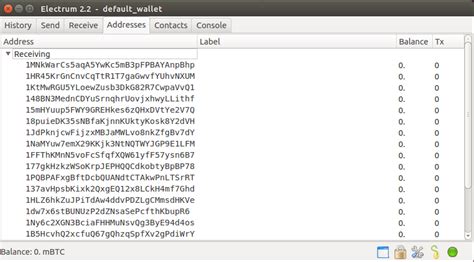Using Bitcoin Core in Regtest in a Classroom WiFi Network
As an educator, you’re looking for a hands-on way to introduce your students to the world of Bitcoin and Regtest. One exciting option is to set up a classroom WiFi network that allows students to use Bitcoin Core in a controlled environment. In this article, we’ll explore how to use Bitcoin Core in Regtest using a WiFi network.
Background
Regtest is a command-line tool developed by Nick Szabo that allows users to test their local Bitcoin blockchain without the need for a full node or mining hardware. With Regtest, students can run simple transactions and observe the block creation process without having to worry about the complexity of running a full node.
Bitcoin Core, on the other hand, is the software that runs the entire Bitcoin network. It’s a full-node implementation that allows users to participate in the Bitcoin network and access various features such as transaction verification, wallet management, and more.
Setting up a Classroom WiFi Network
To set up a classroom WiFi network using Regtest with Bitcoin Core, you’ll need:
- A laptop or desktop with internet connection: Students will use these devices to interact with Regtest.
- Bitcoin Core installed on the laptop or desktop: You can download and install Bitcoin Core from [ /get-bitcoin-core).
- Regtest installed on the laptop or desktop: You can download and install Regtest from [
Setting up Bitcoin Core in a Class
To use Bitcoin Core with Regtest, you’ll need to set up a testnet environment that allows students to generate coins and send transactions. Here’s a step-by-step guide:
- Start the Bitcoin Core daemon: Run
bitcoincore-cli startto start the Bitcoin Core daemon.
- Set up the testnet: You can use Regtest to set up the testnet by running
regtest -addrwhere-port
* For example, if you have a laptop with an IP address of 192.168.1.100 and you want to use port 8333, run regtest -addr 192.168.1.100:8333 -port 8333.
- Generate coins: Run
regtest --getnewaddressto generate a new address for the student.
- Send transactions: Students can now send transactions using Regtest by running
regtest. For example, if you want to send 1 Bitcoin from node: : regtest -txhash.:
- Observe the block creation process: Regtest will display information about the transaction, including the block height and timestamp.
Tips and Variations


- To enable transaction verification on your testnet, you can use the
-verboseflag with Regtest:regtest --getnewaddress -verbose.
- You can also set up a network with multiple nodes using Regtest by running
regtest --addnode, where
- To add more features to your testnet, such as transaction fees or block rewards, you’ll need to modify the Regtest code.
Conclusion
Using Bitcoin Core in a classroom WiFi network with Regtest provides students with an interactive way to learn about the blockchain and cryptocurrency. By setting up a testnet environment, you can have students generate coins, send transactions, and observe the block creation process without worrying about the complexity of running a full node or mining hardware. This hands-on approach will help your students develop essential skills in cryptography, programming, and problem-solving, preparing them for real-world applications in the field of cryptocurrency.
